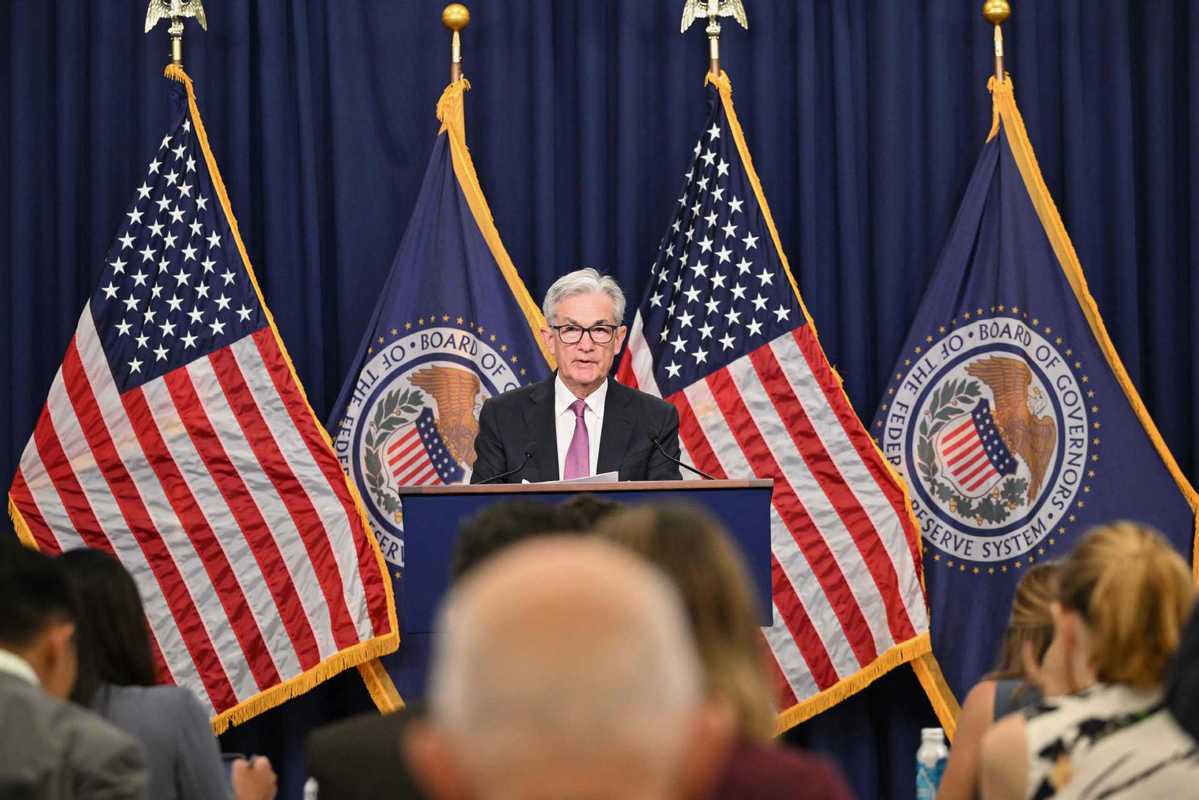Fed likely will keep raising rates for some time
By WILLIAM HENNELLY in New York | chinadaily.com.cn | Updated: 2022-09-20 11:10

The US Federal Reserve is in a tough spot, trying to corral stubbornly high inflation but also looking to steer clear of an economic downturn.
The central bank is expected to raise its target policy rate for the fifth time this year on Wednesday, the second day of the Federal Open Market Committee (FOMC) policy meeting.
Commercial banks borrow and lend their excess reserves to one another overnight at that target rate, the federal funds rate.
The Fed also has faced criticism for keeping rates too low for too long, and then for raising them suddenly, starting with the first of four increases in March this year, when the Fed's policy rate was around zero. It now sits at 2.25-2.50 percent, after two 75-basis-point (three-quarter point) hikes in June and July.
Another 75-bps increase is expected on Wednesday, although some observers believe it can be 100 bps.
"As has often happened in the past, the Fed started too late with too little. The Fed did not stop its bond buying until March of this year, meaning that it continued to inject large amounts of liquidity into the economy right up to the time that inflation took off," said Raymond Hill, a senior lecturer at the Goizueta Business School of Emory University in Atlanta, in comments to China Daily.
He said he doesn't expect the Fed to raise more than 75 bps on Wednesday but sees two more similar hikes in November and December.
"The only reason for doing less (than 75 bps Wednesday) is the buzz this past week about stronger expectations for a recession that seemed to have led to the large drop in the stock market," Hill said. "However, all the data seem to point in the opposite direction. August job growth was robust (315,000), unemployment up a little but still low (3.7 percent), labor force participation up a little (62.4 from 62.1)."
A strong jobs market and wage growth put upward pressure on consumer prices.
"I suspect some FOMC members will be alarmed by [last week's settlement] with the rail unions and the 24 percent wage increase they will receive over 2020-24. Once inflationary expectations become embedded in future wage growth, the Fed's job in restraining inflation will become even more difficult," Hill said.
He said that "the Fed's actions must offset the continued fiscal irresponsibility of the president and Congress. States and local governments are still spending COVID relief funds. Student debt forgiveness will be inflationary. And, while most people say the Inflation Reduction Act will have little effect on inflation, I am cynical enough to expect it will actually increase inflationary pressure."
The $737 billion inflation legislation — which includes nearly $400 billion for environmental programs, includes tax credits of up to $7,000 to buy electric vehicles.
The consumer price index (CPI) report by the Labor Department has shown an increase year over year above 8 percent for six straight months. More recently, it was up 8.3 percent in August, 8.5 percent in July, and 9.1 percent in June, which was the largest jump since 1981.
"And the really important data show that inflation is not abating," Hill said. He noted that although gasoline and other fuel prices dropped, "inflation in almost every other component of the CPI was unacceptably high, and core inflation (which the Fed relies on for its estimate of the inflation trend) rose in August and is running at over 7 percent on an annual basis."
The Fed's target inflation rate is 2 percent. The bank's dual mandates are price stability and maximum employment. The unemployment rate of 3.7 percent in August was up slightly from 3.5 percent in July, but still low.
Maximum employment is loosely defined as the highest level of employment the economy can sustain without igniting inflation, which has not been achieved.
"In terms of the macroeconomy, the Fed's story has remained largely unchanged: Inflation will return to target without the unemployment rate rising above 4.5 percent. They might well still prove to be right on that," Narayana Kocherlakota, the Lionel W. McKenzie Professor of Economics at the University of Rochester, told China Daily.
"But, as usual, the problem is in the tails: If they are wrong, and they have to bring down inflation by putting the brakes on the economy, then the unemployment rate may have to rise by a lot, to 7 percent or even beyond," he said.
Federal Reserve Chair Jerome Powell, speaking at an event hosted by the Cato Institute on Sept 8, believes the bank can meet both mandates.
"I don't see the two goals as in conflict at all because without price stability, we will not be able to achieve the kind of strong labor market that we want for a sustained period that benefits all, so I don't see a case for moving to a single mandate," he said.
Some financial experts say a 100-bps hike by the Fed is possible.
Economists at Nomura on Sept 13 changed their rate forecast from 75 to 100 bps, writing that "a more aggressive path of interest rate hikes will be needed to combat increasingly entrenched inflation".
Nisha Patel, director and portfolio manager of fixed income at Parametric, told bloomberg.com: "Don't be surprised if the Fed's hand is forced to do 100 bps. The idea that inflation had peaked has been dispelled, and now the likelihood of that soft landing for the economy has only decreased."
Steven Englander, head of Group-of-10 currency research at Standard Charter, told bloomberg.com: "If you are on the FOMC and believe that the market needs shock and awe to lower inflation expectations, then maybe you argue for 100bps. I think it's more sensible for the FOMC to say ‘we can keep raising rates as far as we have to but don't have to do it at once'".
If the Fed's rate hikes lead to a recession, which by one traditional measure (two consecutive quarters of GDP retraction) the economy already is in, a downturn will have an impact globally.
In a September report by the World Bank, economist Stephen Roach wrote: "Notwithstanding the pitfalls of forecasting anything these days, my cracked and worn crystal ball sees a global recession occurring in the next year. ... Collectively, Europe, the US, and China make up about half of world GDP on a purchasing-power-parity basis. With no other economy able to fill the void, I am afraid a global recession does indeed appear inevitable."
























